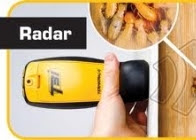Silverfish is a common pest in many households across Australia, especially in areas like Castle Cove, Central Coast and Northern Beaches. They are usually bluish-silver or brownish-grey in colour and can grow up to the length of 19 millimetres. Their favourite hiding spots include attics, bathrooms and kitchens - any place that is damp and dark. They love to feed on shampoos, cellulose, dead insects, silk, linen and residual glue. They can move as well as reproduce quickly, which allows them to spread throughout a place within a short period of time.
Although silverfish are nocturnal and their infestation can sometimes go unnoticed, they can be prevented and controlled by implementing several measures, some of which have been discussed below:
Reducing Humidity
Silverfish need a continuous supply of moisture for ensuring survival. By reducing this one basic necessity of theirs, it is possible to control them significantly. Basements and attics must be ventilated properly, and dried with the help of dehumidifiers or stand fans. Leaky faucets and pipes must be fixed or replaced. If there are no pets or small children in the house, placing silica gels in holes, cracks and corners can also help.
Elimination of Food Sources
Silverfish are known to snack on a wide range of things including starches, cereal grains, paper, book glue, cotton, linen, silk and even mould. Therefore, it is important to sweep, mop or vacuum diligently for removing food crumbs that can act as effective food sources. All magazines, papers and books must be kept in metal trunks having tight lids. Rugs and carpets should be cleaned regularly for removing mildew.
Reducing Humidity
Silverfish need a continuous supply of moisture for ensuring survival. By reducing this one basic necessity of theirs, it is possible to control them significantly. Basements and attics must be ventilated properly, and dried with the help of dehumidifiers or stand fans. Leaky faucets and pipes must be fixed or replaced. If there are no pets or small children in the house, placing silica gels in holes, cracks and corners can also help.
Elimination of Food Sources
Silverfish are known to snack on a wide range of things including starches, cereal grains, paper, book glue, cotton, linen, silk and even mould. Therefore, it is important to sweep, mop or vacuum diligently for removing food crumbs that can act as effective food sources. All magazines, papers and books must be kept in metal trunks having tight lids. Rugs and carpets should be cleaned regularly for removing mildew.
Regulation of Light & Heat
Common silverfish normally cannot tolerate too much light and heat and prefer temperatures ranging from 21 to 27 degrees Celsius. If the inhabitants can tolerate it, the infested area may be heated above 27 degrees and then cooled to 15 degrees. Light can be used for forcing the pests into areas where they can be easily tackled.
Blocking Entry Points
Caulking or plaster can be used for blocking cracks or holes where silverfish are suspected to reside. These holes are where the pests lay and deposit eggs. Blocking up the crevices will prevent them from coming out. Careful attention must be paid to small cracks between the floor and runner board.
If infestations persist even after resorting to above mentioned tips, it would be better to contact professionals dealing with pest control in Castle Cove or other parts of Australia. However, steps must be taken to determine whether the pest control firm being considered is efficient enough for taking care of the infestation or not.
Common silverfish normally cannot tolerate too much light and heat and prefer temperatures ranging from 21 to 27 degrees Celsius. If the inhabitants can tolerate it, the infested area may be heated above 27 degrees and then cooled to 15 degrees. Light can be used for forcing the pests into areas where they can be easily tackled.
Blocking Entry Points
Caulking or plaster can be used for blocking cracks or holes where silverfish are suspected to reside. These holes are where the pests lay and deposit eggs. Blocking up the crevices will prevent them from coming out. Careful attention must be paid to small cracks between the floor and runner board.
If infestations persist even after resorting to above mentioned tips, it would be better to contact professionals dealing with pest control in Castle Cove or other parts of Australia. However, steps must be taken to determine whether the pest control firm being considered is efficient enough for taking care of the infestation or not.




























